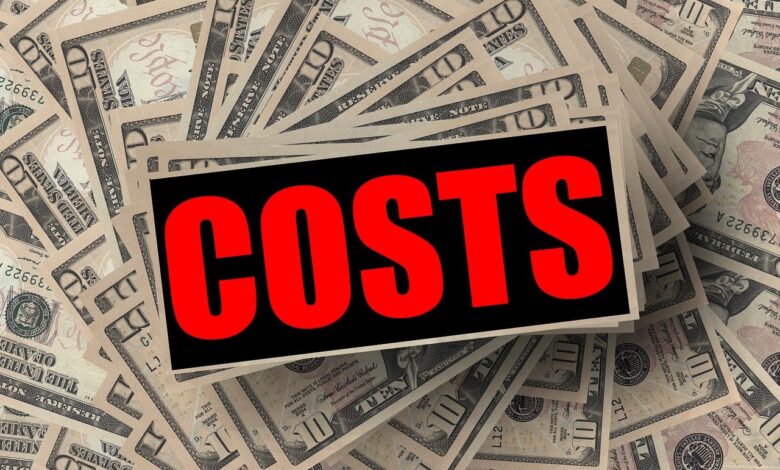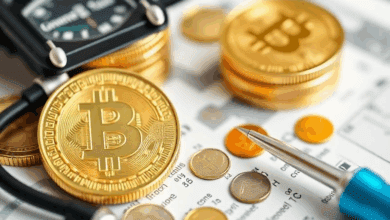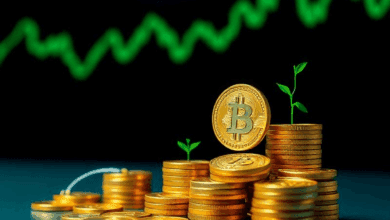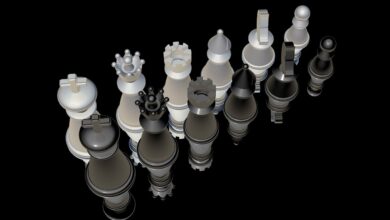Frugal living – maximizing value while minimizing costs

Adopting a cost-conscious lifestyle requires deliberate decisions that prioritize savings without sacrificing quality. Allocating resources efficiently starts with identifying expenses that offer limited returns and redirecting funds toward high-impact areas such as durable goods, bulk purchases, and energy-efficient solutions. Research shows households that implement strategic budgeting techniques reduce monthly expenditures by up to 30% while maintaining or improving their standard of living.
Effective resource management hinges on choices grounded in long-term benefits rather than immediate gratification. For example, opting for homemade meals instead of frequent dining out can save an average family over $3,000 annually. Similarly, selecting multifunctional products reduces the need for multiple purchases, streamlining consumption patterns and curtailing unnecessary spending.
A lifestyle centered on economic prudence also involves continuous evaluation of recurring charges and subscription services. Regular audits often reveal redundant payments totaling hundreds of dollars yearly. Redirecting these funds into savings accounts or investment vehicles compounds financial growth. Incorporating these pragmatic strategies fosters resilience against inflationary pressures and market volatility.
Frugal living: maximizing value while minimizing costs
Reducing expenditures without compromising quality remains a strategic approach to optimizing personal finances. Implementing targeted spending cuts across monthly bills, such as utilities and subscriptions, can increase disposable income significantly. Data from the U.S. Bureau of Labor Statistics highlights that average household utility expenses represent roughly 5-7% of total monthly outlays; negotiating better rates or switching providers can yield savings upwards of 15%. Similarly, eliminating underutilized services through subscription audits often uncovers redundant payments, directly enhancing financial reserves.
Adopting this prudent lifestyle extends beyond mere expense reduction by incorporating investment in durable goods with prolonged lifespans. For instance, purchasing energy-efficient appliances certified by ENERGY STAR programs reduces electricity consumption by up to 30%, lowering recurring charges substantially over time. A comparative cost-benefit analysis indicates that initial premium pricing is offset within 3-5 years through cumulative utility savings, confirming the efficacy of strategic acquisitions in expenditure control.
Implementing systematic budgeting techniques for enhanced savings
Employing zero-based budgeting frameworks ensures every dollar is allocated intentionally, preventing unnecessary allocations. This method requires re-evaluation of all monthly expenses from scratch rather than incremental adjustments, facilitating identification and elimination of non-essential spending. Case studies demonstrate that households adopting this framework report a 12-18% improvement in net savings within six months due to disciplined resource distribution.
Technological tools also play a pivotal role in expenditure management. Mobile applications equipped with AI-driven analytics track real-time transactions against predefined thresholds, providing actionable alerts before overspending occurs. Integration with banking APIs enables seamless categorization and forecasting, empowering users to adjust consumption habits promptly and maintain fiscal discipline without sacrificing lifestyle standards.
Incorporating alternative consumption models such as shared economy platforms further enhances resource efficiency. Utilizing car-sharing services or community tool libraries reduces upfront acquisition costs and maintenance responsibilities typically associated with ownership. Market data suggests that participation in these systems can decrease annual transportation-related expenses by up to 40%, illustrating practical avenues for cost containment aligned with contemporary consumer trends.
A long-term perspective on budget optimization includes leveraging tax-advantaged accounts and investment strategies to preserve capital growth while controlling outflows. Allocating surplus funds into diversified portfolios with moderate risk profiles supports wealth accumulation beyond immediate cash flow improvements. Financial advisors recommend periodic portfolio rebalancing to align asset allocation with evolving goals and economic conditions, thus maintaining optimized returns relative to exposure.
The ongoing evaluation of spending behavior combined with strategic acquisition choices enables sustained enhancement of monetary resources without forfeiting essential lifestyle elements. By systematically applying data-driven insights and embracing innovative consumption methods, individuals can achieve significant financial efficiency gains and secure stronger economic resilience amid fluctuating market environments.
Smart Grocery Shopping Tips
Prioritize planning your shopping list based on weekly promotions and seasonal produce to reduce expenses without compromising quality. Studies indicate that consumers who align purchases with store discounts save up to 20% on their grocery bills. Utilize digital tools such as store apps or price comparison websites to identify optimal purchase opportunities, ensuring strategic allocation of funds.
Adopting bulk buying for non-perishable items leads to substantial long-term savings by lowering unit prices. For instance, purchasing grains or canned goods in larger quantities can reduce average expenditure per serving by 15-30%. However, it is critical to assess storage capabilities and product shelf life to avoid waste and unintended financial loss.
Effective Strategies for Economical Food Acquisition
Evaluate product categories based on nutritional density relative to price metrics, favoring nutrient-rich options that support health goals within budgetary constraints. Research from the USDA highlights that legumes, frozen vegetables, and whole grains often provide superior nutrient-to-cost ratios compared to processed alternatives.
- Seasonal produce: Generally priced 25-40% lower due to local availability and reduced transportation costs.
- Private-label brands: Often offer comparable quality at approximately 20% less than national brands.
- Multi-use ingredients: Ingredients like onions and carrots serve multiple recipes, enhancing resource utilization efficiency.
Leveraging technology-driven loyalty programs further enhances consumer economy by accumulating rewards redeemable for future discounts. Data analytics reveal that shoppers engaged in such programs typically experience an additional saving margin of 5-10%, cumulatively impacting overall household expenditure positively.
Avoid impulse purchases by adhering strictly to your predetermined list; research demonstrates unplanned buying can inflate grocery spending by up to 35%. Employing a fixed budget framework before entering stores encourages disciplined decision-making aligned with economic priorities and lifestyle preferences.
The incorporation of these methodologies into daily routines not only trims unnecessary expenditure but also fosters a sustainable approach adaptable across varying economic conditions. This systematic resource management aligns well with prudent budgeting models endorsed by financial advisors specializing in consumer economics and wealth preservation strategies.
Reducing Monthly Utility Bills
Adjusting thermostat settings to optimize heating and cooling can significantly lower monthly energy expenses. Studies indicate that reducing the heating temperature by 1°C results in approximately 6% savings on heating bills annually. Implementing programmable thermostats allows for precise control over indoor climate, aligning energy consumption with occupancy patterns and preventing unnecessary usage during inactive periods. Such adjustments contribute to a more economical lifestyle by curbing excessive utility expenditures.
Switching to energy-efficient appliances rated by ENERGY STAR or equivalent certifications enhances long-term savings through reduced electricity demands. For example, replacing an incandescent bulb with LED lighting can cut lighting energy use by up to 75%. Integrating smart power strips further prevents phantom loads from devices in standby mode, which cumulatively account for nearly 10% of household electricity consumption according to the U.S. Department of Energy. These equipment choices create measurable reductions in utility charges without compromising functionality.
Behavioral Adaptations and Renewable Integration
Altering daily habits such as limiting water heater temperatures to around 49°C (120°F) decreases both gas and electric water heating costs by roughly 10-15%, based on data from energy efficiency programs. Additionally, scheduling high-consumption activities like laundry during off-peak hours leverages lower tariff rates under time-of-use billing models prevalent in many regions. Incorporating solar photovoltaic panels offers a strategic approach by generating electricity onsite, which can offset grid dependency and yield net metering credits in jurisdictions with supportive policies, thereby shrinking utility payments effectively.
An analytical review of household utility bills over multiple months reveals that comprehensive audits identifying leaks, insulation weaknesses, or outdated wiring present opportunities for targeted interventions. Retrofitting insulation materials can reduce heat loss by up to 30%, directly impacting heating expenses especially in colder climates. Collaboration with certified energy auditors ensures that investment decisions align with anticipated savings trajectories, facilitating a prudent allocation of resources towards cost containment within everyday living environments.
Low-cost Home Maintenance Hacks
Implementing routine inspections of HVAC systems can significantly extend their operational lifespan and reduce energy consumption. According to the U.S. Department of Energy, regular filter changes and system tune-ups can improve heating and cooling efficiency by up to 15%, translating into substantial monthly savings on utility bills. Utilizing programmable thermostats enhances control over temperature settings, optimizing energy usage without sacrificing comfort.
Water conservation methods such as installing low-flow faucets and fixing leaks promptly contribute directly to lowering water bills. The Environmental Protection Agency estimates that a single leaky faucet wasting 10 gallons daily equates to approximately $130 annually in unnecessary expenses. Employing pressure regulators in plumbing systems also prevents damage caused by excessive water pressure, reducing the frequency of costly repairs.
Practical Strategies for Cost-effective Upkeep
Opting for DIY solutions in minor repairs like caulking windows or sealing cracks around doors can prevent heat loss during colder months, enhancing insulation performance. Studies from the Building Science Corporation demonstrate that proper sealing reduces thermal bridging, thereby decreasing heating requirements by about 10%. Selecting high-quality sealants ensures durability and long-term protection against drafts.
- Routine Gutter Cleaning: Clearing debris prevents water accumulation and structural damage; annual cleaning costs under $50 when self-performed.
- Smart Lighting: Transitioning to LED bulbs reduces electricity consumption by approximately 75% compared to incandescent lighting, with an average lifespan exceeding 25,000 hours.
- Appliance Maintenance: Regular defrosting of refrigerators improves efficiency by up to 30%, as documented in appliance performance analyses.
The integration of smart home devices enables continuous monitoring of energy and water usage patterns. Data-driven insights empower homeowners to adjust behaviors dynamically, producing incremental savings over time. For example, smart leak detectors alert users instantly about potential plumbing issues before they escalate into expensive repairs.
A comprehensive approach combining preventive maintenance with informed product selection yields considerable financial advantages over time. Allocating resources strategically toward durable materials and leveraging technological innovations fosters sustainable household management practices that align with prudent economic decisions.
Conclusion
Adopting strategic entertainment options that prioritize prudent allocation of resources can substantially enhance lifestyle efficiency without sacrificing enjoyment. Leveraging subscription models with bundled services, open-source gaming platforms, and decentralized content distribution networks enables a refined selection process that aligns with financial prudence.
The interplay between emerging blockchain-based solutions and traditional entertainment paradigms suggests significant potential for cost-effective engagement. Smart contracts facilitating microtransactions and tokenized access to exclusive experiences present novel avenues for increasing discretionary savings through tailored consumption patterns.
Future Outlook
- Decentralized Finance Integration: Incorporating DeFi mechanisms may allow users to stake or earn rewards on entertainment-related digital assets, further optimizing expenditure returns.
- Tokenization of Leisure Assets: Fractional ownership models could democratize access to premium events or media libraries, enhancing choice diversity within budget constraints.
- AI-Driven Personalization: Advanced algorithms will refine recommendation systems, ensuring alignment with individual financial goals and preferences, thus improving overall satisfaction per unit expense.
Ultimately, the convergence of innovative technologies and disciplined resource management fosters an ecosystem where economic discipline complements lifestyle aspirations. Continuous evaluation of available options combined with adaptive strategies will yield the greatest accumulation of savings and experiential benefit over time.






